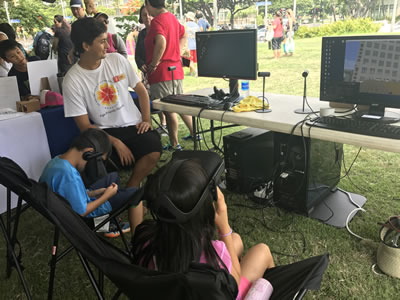by Christy Nishita and Tyran Terada, Journal of Intergenerational Relationships, 2019
The goal of AFH’s Youth Engagement Initiative is to teach youth about the role of
the built environment and community features in promoting active aging and engagement among older adults. This article describes one workshop within this initiative – its intergenerational Minecraft (a popular video game in which players use 3-D blocks to create virtual lands) workshop.
The learning objectives for this workshop were to: (1) increase awareness about aging issues and the barriers in the built environment that may present difficulties for frail older adults; (2) build empathy and understanding through intergenerational interaction; and (3) use design thinking and Minecraft to explore age-friendly design solutions.
Each team of 3–4 youth and older adults utilized a walk audit form to examine one of three themes: safety and accessibility, getting active, and gathering places.
Minecraft was used as a tool to envision and visualize age-friendly changes to Honolulu’s Chinatown. In the virtual world, the teams identified the area of Chinatown that they were targeting, and used Minecraft to rebuild it and become more-age-friendly.
Participants were highly satisfied with working in small, intergenerational groups in order to design the age-friendly community. The majority of old and young respondents indicated that they felt comfortable sharing ideas and empowered by the activities.
This study is particularly relevant for my thesis because it highlights how older adults and kids can be creative together. This exercise was educational and done in a fun way. This research study also served to reduce ageism and increase compassion for older adults and their limitations. I have similar goals with my project at Champion Intergenerational.




